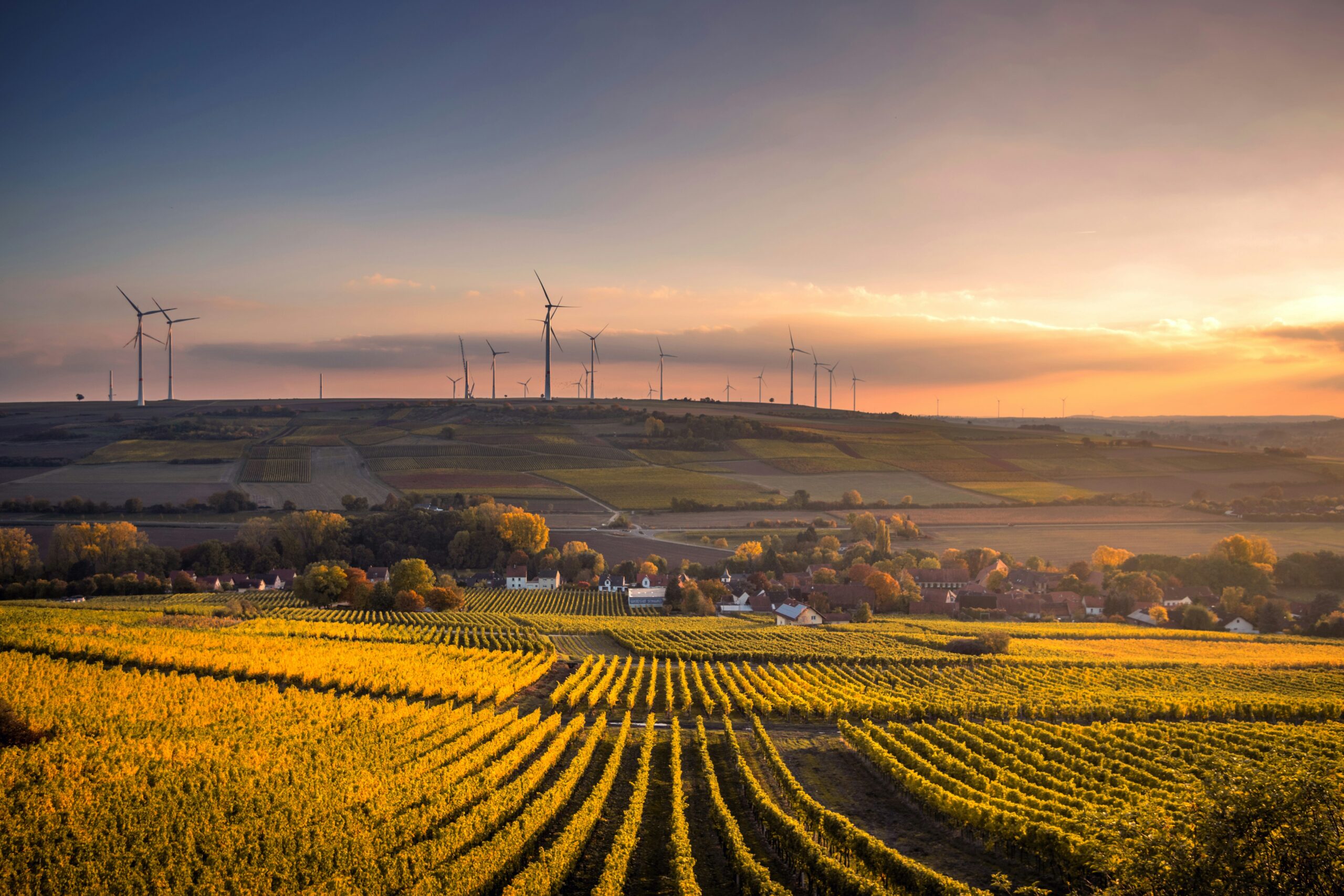
Why Is Topsoil Crucial For Agriculture
Topsoil is the foundation of agriculture, playing a vital role in plant growth, water retention, and carbon sequestration. However, soil degradation is a growing threat to food security and sustainability.
Healthy topsoil is the key to productive agriculture. It provides essential nutrients, improves water retention, and supports beneficial microorganisms. However, due to unsustainable farming practices, topsoil is being lost at an alarming rate. Understanding and maintaining soil fertility is vital for achieving sustainable agriculture and ensuring that future generations can enjoy secure food production. By adopting sustainable soil management techniques, we can protect this vital resource, enhance soil health, and promote plant growth.
What Is Topsoil? Understanding Its Composition and Role
Definition of Topsoil
Topsoil is the uppermost layer of soil, ranging from 2 to 8 inches deep. This layer is densely packed with organic matter, minerals, and microorganisms essential for plant growth. It is the fertile topsoil from which crops draw their sustenance and where the majority of biological soil activity occurs. The soil particles here are finer, and they contain a richer concentration of soil organic matter compared to subsoil, making it a critical component for fertile and productive land.
Essential Nutrients Found in Topsoil
Topsoil is rich in nitrogen (N), phosphorus (P), and potassium (K), which are vital for the growth and development of plants. These nutrients, combined with organic matter and beneficial microbes, enhance soil fertility by providing a balanced nutrient-rich soil amendment. The presence of these elements is crucial to maintain soil fertility over time, ensuring that crops receive the adequate nourishment needed for optimal yield.
How Topsoil Forms & Its Slow Regeneration Process
The formation of topsoil is an intricate, slow process that takes hundreds of years for just an inch to develop. It is created through the natural weathering of rocks and the decomposition of organic materials, and this slow but steady process helps build soil structure and enriches the soil with organic carbon. Understanding the slow regeneration of topsoil emphasizes the importance of preserving this resource. Soil formation involves creating a balance of soil particles, organic matter, and microbial life, making it a complex yet fragile system. Preservation and responsible agricultural practices are essential to prevent soil erosion and degradation and to ensure the long-term fertility needed for sustainable agriculture.
Why Is Topsoil Crucial for Agriculture?
1. Provides Essential Nutrients for Crops
Topsoil is indispensable for agriculture as it supplies vital nutrients that enhance plant growth and root development, leading to higher crop yields. Its nutrient-rich character is crucial in supporting various agricultural practices fundamentally based on the availability of these nutrients. Ensuring nutrient replenishment is vital to improve soil fertility and maintain overall productivity of farmland.
2. Improves Water Retention and Drainage
Healthy topsoil plays a significant role in water retention and drainage. Its structure allows it to hold moisture effectively while facilitating the drainage of excess water, thus preventing waterlogging and reducing the risk of soil erosion. This balance ensures that plants receive ample water for growth without the detrimental effects of oversaturation, ultimately supporting robust crop production.
3. Enhances Soil Aeration and Root Development
Loose, well-structured topsoil improves soil aeration by allowing better oxygen flow to plant roots. This encourages healthy root systems, which are vital for plant stability and nutrient absorption. Proper soil structure also aids in preventing soil compaction, facilitating optimal plant growth and resilience, essential for sustenance of fertile topsoil conditions.
4. Protects Against Soil Erosion
Topsoil acts as a natural barrier against wind and water erosion, preserving land for sustainable farming. Implementing cover crops and crop rotation can greatly enhance this protective function. These practices help stabilize the soil structure, reducing the movement of soil particles and preserving the nutrient-rich top layer essential for successful farming operations.
5. Supports Microbial and Biodiversity Health
Rich in microorganisms, topsoil is a hub of biodiversity that assists in nitrogen fixation, organic decomposition, and overall soil health. A thriving ecosystem of microbes contributes to the soil organic matter and supports sustainable soil management. It encourages nutrient cycling and enhances the soil’s capacity to produce healthy crops, diminishing the need for chemical fertilizers.
6. Aids in Carbon Sequestration & Climate Change Mitigation
Topsoil stores carbon in the form of soil organic carbon, which helps reduce greenhouse gas emissions, an essential aspect of mitigating climate change. This function highlights the importance of regenerative agriculture practices. By focusing on enhancing soil organic content, you can contribute to more sustainable agricultural systems that effectively combat climate concerns.
Causes of Topsoil Degradation & Loss
Excessive Use of Chemical Fertilizers & Pesticides
The overuse of synthetic fertilizers and pesticides has disrupted soil biology, leading to nutrient depletion and soil degradation. These substances can destabilize the natural balance of microbial life and contribute to soil acidification. The degradation of soil health diminishes the land’s ability to support plant growth and requires more intensive agricultural inputs, creating a cycle of dependency that is difficult to break.
Monoculture & Unsustainable Farming Practices
Practicing monoculture, or growing the same crops continuously on the same land, severely depletes specific nutrients and weakens the overall soil structure. It can lead to a decline in soil fertility and result in increased vulnerability to pests and diseases. Unsustainable farming techniques further exacerbate these issues, hastening soil erosion and compaction, and compromising long-term food production goals.
Deforestation & Land Clearing
The removal of trees and other vegetation for agricultural expansion leaves the soil exposed to erosion and nutrient loss. The absence of tree roots, which usually hold soil particles together, makes the land susceptible to washing away during rainstorms or being blown away by the wind. As soil erosion escalates, the richness and productivity of the topsoil are significantly diminished, contributing to reduced soil fertility and productivity.
Overgrazing & Soil Compaction
Excessive livestock grazing damages plant cover, which is essential for protecting soil structure and organic matter. This practice leads to soil compaction—a decrease in pore space within the soil—restricting root growth and water infiltration. Such conditions impair plant growth and further intensify soil degradation, ultimately threatening sustainable agriculture by depleting the fertile layers necessary for crop production.
Urbanization & Construction
The expansion of urban areas and infrastructure, such as roads and buildings, removes fertile land from agricultural use, thereby reducing overall agricultural productivity. As cities grow, the encroachment on arable land can result in significant losses of valuable topsoil, which is critical for sustaining agricultural activity and ensuring food production.
How Farmers Can Protect & Restore Topsoil
1. Conservation Tillage & No-Till Farming
Conservation tillage and no-till farming are practices designed to minimize soil disturbance, thereby preserving organic matter and enhancing soil structure. By avoiding traditional plowing methods, these practices help maintain soil organic content and prevent erosion. This leads to improved soil health and fertility over time, essential for sustainable agriculture and long-term productivity.
2. Crop Rotation & Cover Crops
Crop rotation and the use of cover crops are effective methods to prevent nutrient depletion and naturally suppress pests. By rotating crops, farmers can break pest cycles and contribute to soil fertility by varying the nutrient demands on the soil. Cover crops protect the soil surface from erosion and provide organic matter that enriches the soil, promoting a rich biodiversity and healthier plant growth environment.
3. Organic Composting & Mulching
Incorporating organic compost and mulch into farming practices improves soil fertility by adding nutrient-rich organic matter. This approach enhances moisture retention and increases resistance to soil erosion. Composting organic waste materials and applying them to fields can also boost soil health by encouraging microbial activity and enhancing soil organic matter, leading to improved plant growth.
4. Sustainable Water Management
Sustainable water management, such as using drip irrigation and rainwater harvesting, reduces soil erosion and water waste. These methods allow precise water application directly to plant roots, ensuring efficient use of water resources while minimizing runoff. By adopting these strategies, farmers can conserve water and reinforce the stability of the soil structure, ultimately benefiting crop yields and sustainability.
5. Integrated Pest Management (IPM)
Integrated Pest Management focuses on natural pest control methods, reducing reliance on chemical pesticides, which can harm soil biodiversity. IPM employs biological control agents, crop diversity, and habitat manipulation to manage pest populations effectively. By prioritizing ecological balance, IPM helps maintain a healthy soil ecosystem, promoting strong plant growth and sustainable agricultural practices.
6. Using Biofertilizers & Regenerative Practices
Encouraging microbial life through the application of biofertilizers, biochar, and organic amendments enriches long-term soil health. Regenerative practices focus on restoring soil vitality by enhancing soil organic carbon and promoting ecological balance. Adopting these approaches helps improve soil fertility, supports climate change mitigation, and assures the resilience of agricultural systems.
Why Protecting Topsoil Matters for Future Generations
Protecting topsoil is critical for the sustainability and security of future generations’ food supply. Without healthy topsoil, global food security is at significant risk. Productive soil is the bedrock of agriculture; its degradation could lead to diminished crop yields and threatened livelihoods. By embracing sustainable soil management, including practices like crop rotation, cover cropping, and organic amendments, we can maintain and even enhance soil fertility, ensuring that the land remains productive for future generations.
Topsoil conservation also plays a vital role in addressing environmental challenges such as climate change. By utilizing techniques that enhance soil organic carbon, we not only improve soil structure and fertility but also contribute to reducing greenhouse gas emissions, thus supporting broader climate mitigation efforts. As stewards of the earth, it’s crucial to prioritize soil health for our prosperity and ecological well-being. Through thoughtful, intentional action, we can sustain soil fertility and health, safeguarding a crucial resource for generations yet to come.
Enhance Your Topsoil and Boost Farm Productivity with RangeLine Group’s Agricultural Solutions
Explore an extensive selection of agricultural products at RangeLine Group, tailored to elevate your farming operations. Our inventory features robust disc blades for effective soil preparation, ensuring your topsoil remains fertile and well-structured. Enhance nutrient distribution with our fertilizer applicator shanks, and utilize state-of-the-art strip-till solutions like the Soil Warrior to preserve topsoil health. Our quality tillage parts are designed to optimize soil aeration and moisture retention. In addition, we offer a variety of manure injection equipment to enrich topsoil with organic nutrients. Round out your farming needs with essential supplies like LED lights for enhanced visibility and shop essentials to maintain smooth and efficient farm operations.








